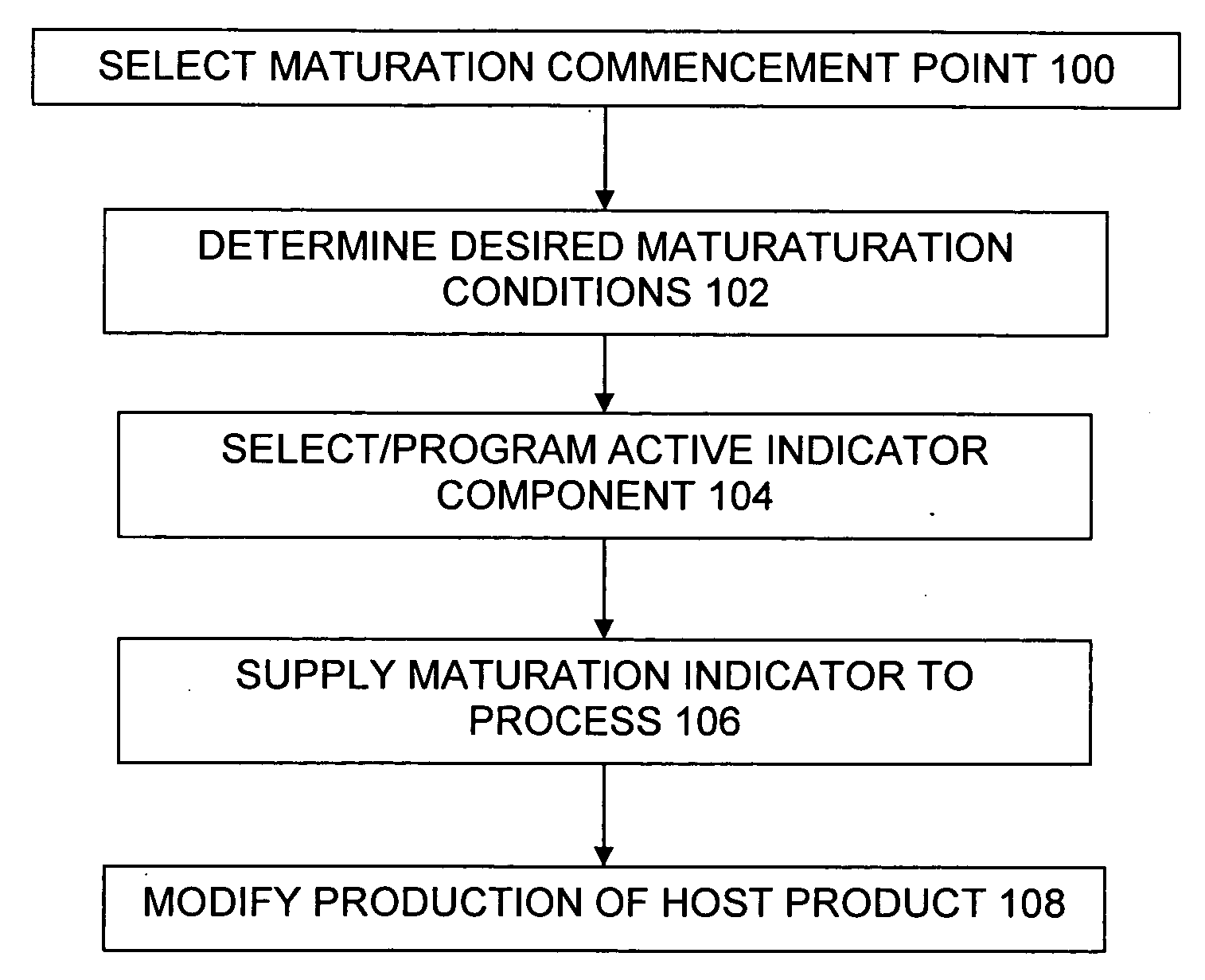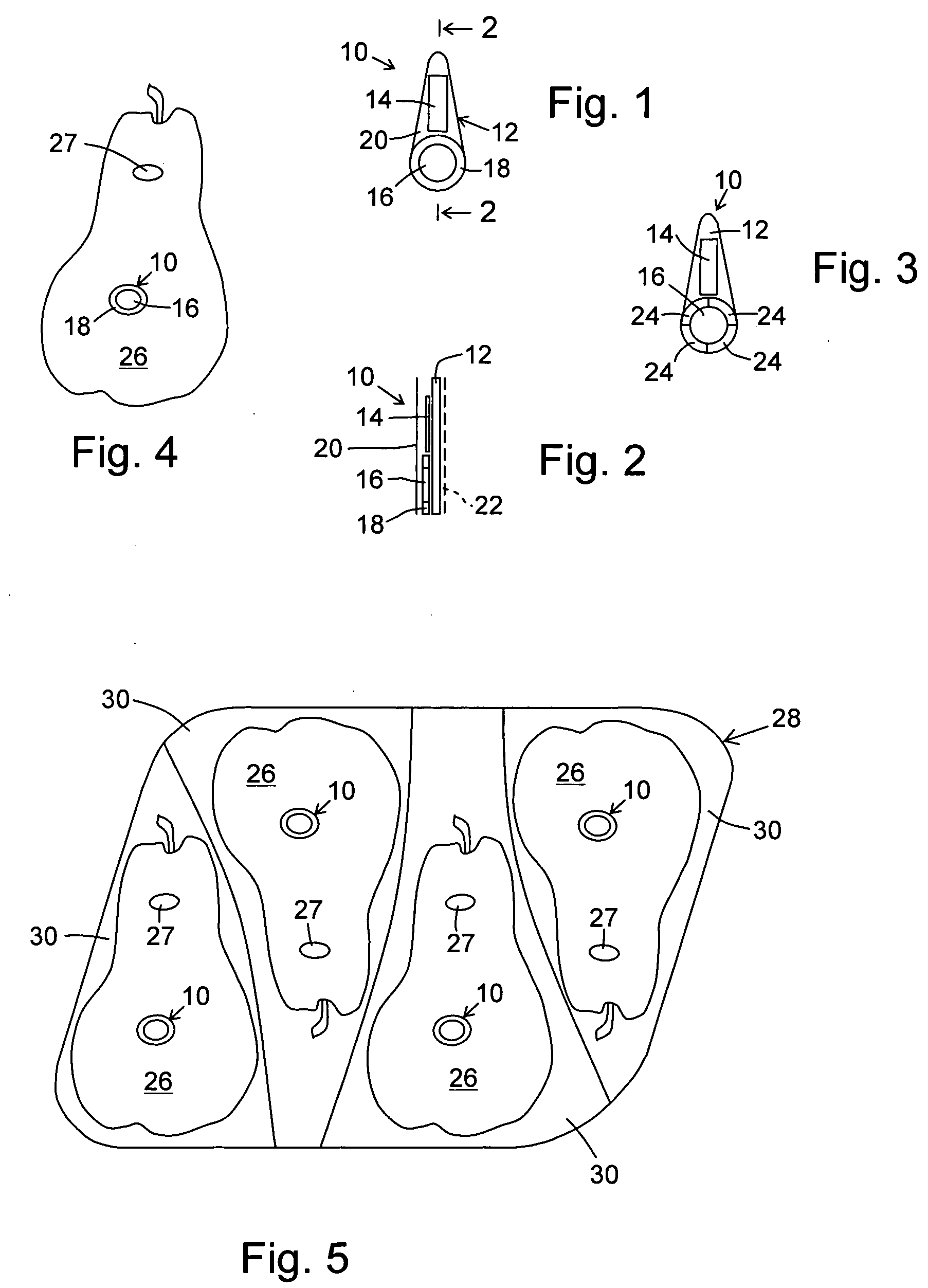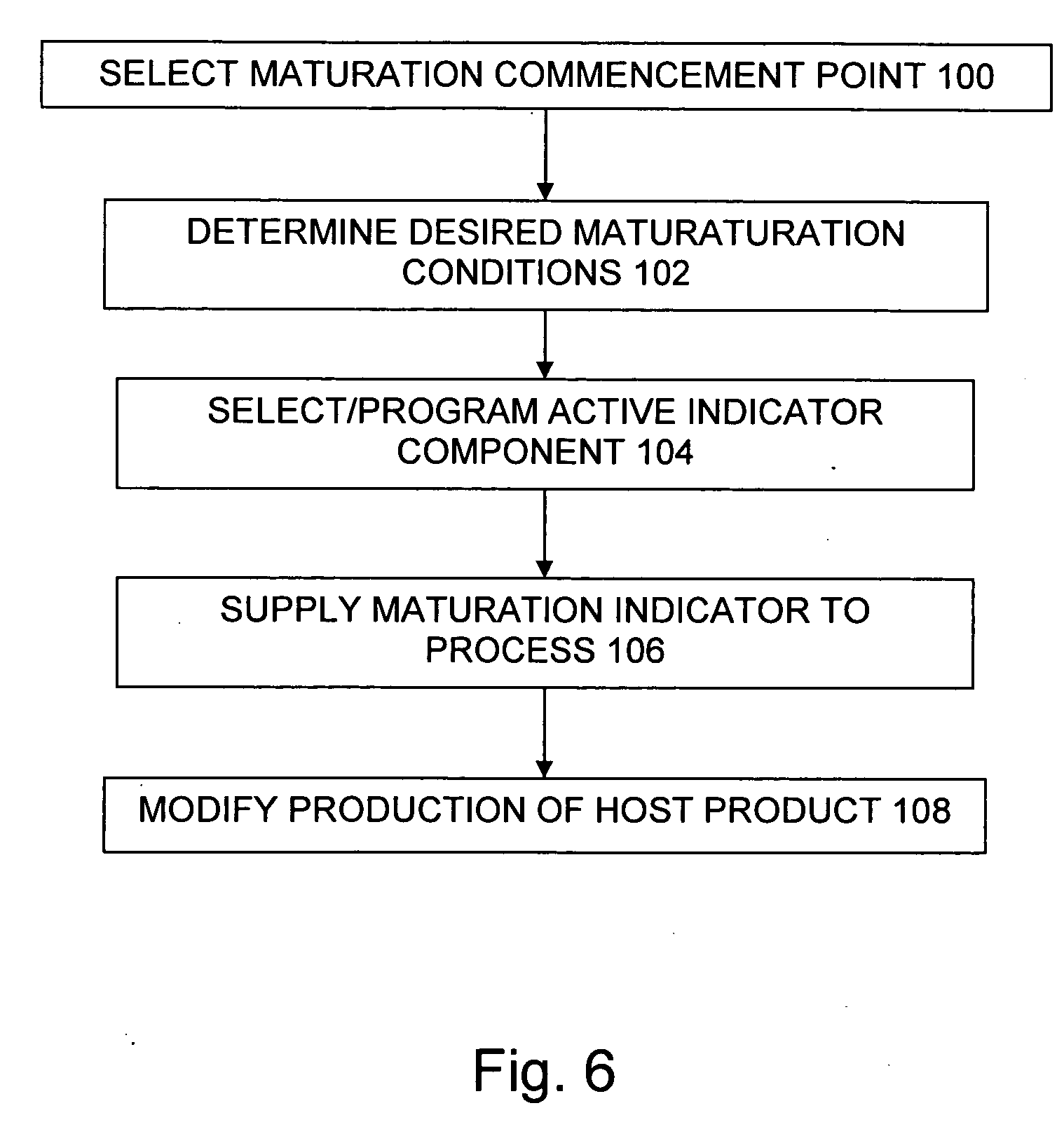Method of marketing maturing consumable products and products useful therein
a consumable product and consumable technology, applied in the field of consumable product marketing, can solve the problems of difficult or impossible to judge the ripeness of the fruit within by its visual appearance, difficult to determine maturity, gritty and unfavorable consumers, etc., and achieve the effect of reducing spoilage of delicate items, quick and easy determination of ripeness or maturity, and convenient for customers
- Summary
- Abstract
- Description
- Claims
- Application Information
AI Technical Summary
Benefits of technology
Problems solved by technology
Method used
Image
Examples
Embodiment Construction
[0047] Referring to FIGS. 1-2, the ripeness- or maturity-indicating label 10 there shown comprises a printable laminar substrate 12 formed e.g. of paper, polymer film or the like. Substrate 12 bears on its front surface descriptive printed indicia 14, an active ripeness indicator 16 and a visual reference ring 18.
[0048] It will be understood that the “ripeness” of fruits, cheeses and other products, generally refers to their maturity and fitness for consumption. For other products, for example wine, the term “mature” may be more commonly or more aptly used to denote a desirable condition after keeping or aging. For the broad purposes of this invention, the terms may be used largely interchangeably, with one or the other term generally being more apt for a particular product as will be known in the respective art.
[0049] Maturity indicator 16 and reference ring 18 can also be printed, e.g. employing a silk screen, if desired. An optional transparent overlay 20 can also be employed a...
PUM
 Login to View More
Login to View More Abstract
Description
Claims
Application Information
 Login to View More
Login to View More - R&D
- Intellectual Property
- Life Sciences
- Materials
- Tech Scout
- Unparalleled Data Quality
- Higher Quality Content
- 60% Fewer Hallucinations
Browse by: Latest US Patents, China's latest patents, Technical Efficacy Thesaurus, Application Domain, Technology Topic, Popular Technical Reports.
© 2025 PatSnap. All rights reserved.Legal|Privacy policy|Modern Slavery Act Transparency Statement|Sitemap|About US| Contact US: help@patsnap.com



